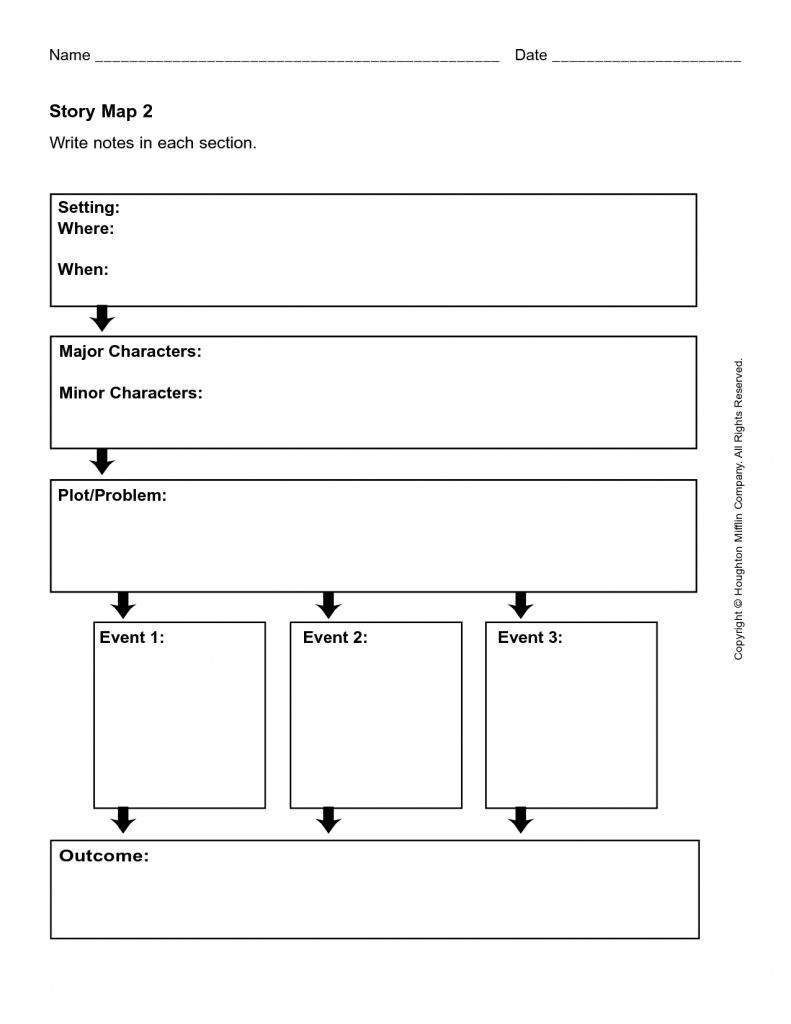
Students can extend their understanding of story maps into their own writing. See cross-disciplinary story mapping chart › Writing This chart shows how the story mapping strategy can be used in language arts, history, and science. Partners can also fill out a story map together after a Paired Reading activity.

Have the students complete story maps in pairs, being sure to partner a reader or writer who needs extra support with one who has more skill.Model this strategy using a book with very clear components to help students understand each component.Differentiate by providing less complex story map templates - the beginning-middle-end format is the simplest - for those working to grasp the basics of stories and other, more complex maps, with students ready to engage in more complex work.For example, in the “Beginning” box of your map, use prompts such as: Who are the main characters? Where does the story take place? You can write in these prompts before printing or making copies of a story map intended for students to fill out independently. Scaffold your instruction by providing prompts for each section on your map.Then, have students complete the diagram independently on whatever book or concept you’re studying.Differentiated instruction For second language learners, students of varying reading skill, and younger learners.If students need more practice with the diagram, have them complete one on themselves, next.Complete the first one together as a class, so students can see that you want thoughtful responses and detailed visualizations.
STORY MAP ORGANIZER HOW TO
Model how to complete the diagram thoughtfully.Once students get used to using the organizer, they can draw their own versions on paper. At the beginning of the year: Have students complete one about themselves, using major events from their own lives!.Additional sheets can be added for additional chapters. The pictures also show you what a student is visualizing as they read. As an assessment tool to see how well students understand the main ideas of each chapter in a novel study.As an organizational tool before writing essays (a different point or paragraph can be organized in each box).As a study guide before a history test, to sequence major events.And in the rectangle at the bottom, students write a sentence summarizing the main idea.įor younger grades, this can be very simple: A simple drawing of the characters with a simple sentence describing the drawing.įor older grades, this exercise can involve more detail and synthesis: The drawings can be very detailed, and their summary sentences may need to include more than one main idea to encompass the important events of an entire chapter.


In the large box, students draw a picture summarizing the main idea of the chapter (or historical events or science concept, etc). In the small box in the right-hand corner, the students can number the boxes sequentially. Each box on the chart represents a different chapter or event. This tool allows students to summarize and visually depict main ideas of a novel or text. In this post, we’ll be talking about the handy dandy Story Map. In the previous post, we met The Stick Man.
STORY MAP ORGANIZER SERIES
This three-part series will share a new (downloadable!) graphic organizer with each post. Graphic organizers allow students to display and organize their thinking concretely–whether they’re reading a novel or their history book. Share your thoughts! One lucky commenter from this post will receive a $20 School Box gift card!


 0 kommentar(er)
0 kommentar(er)
